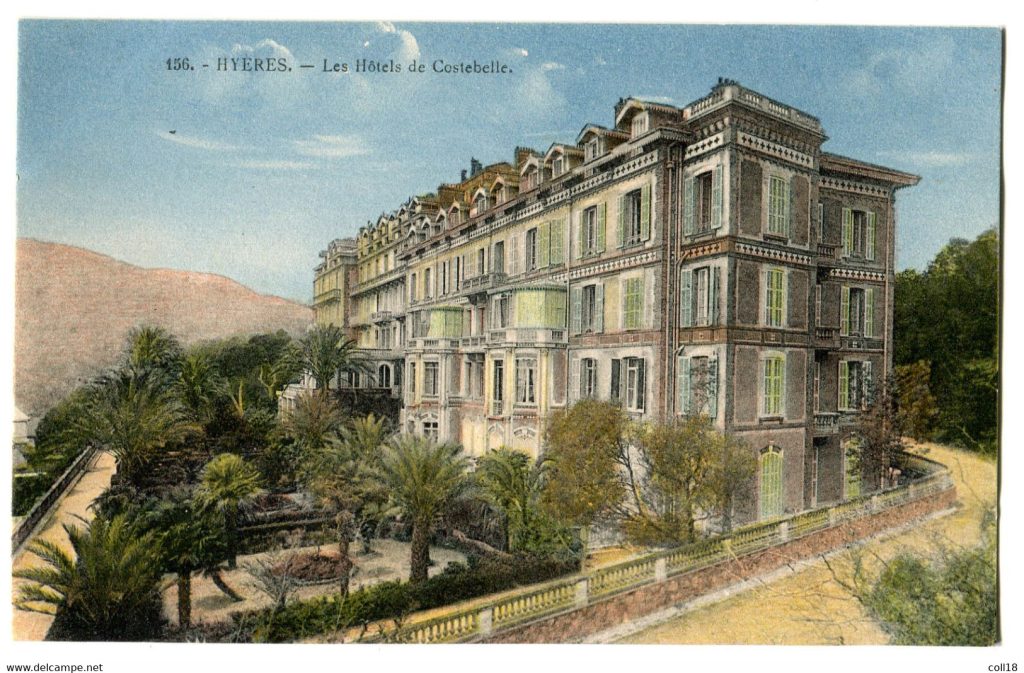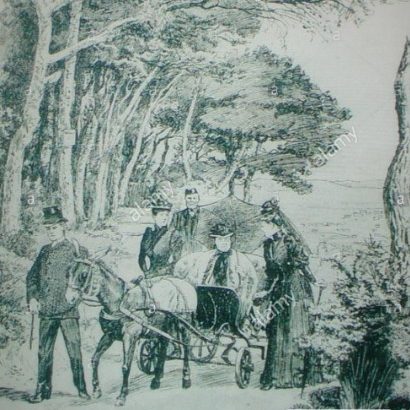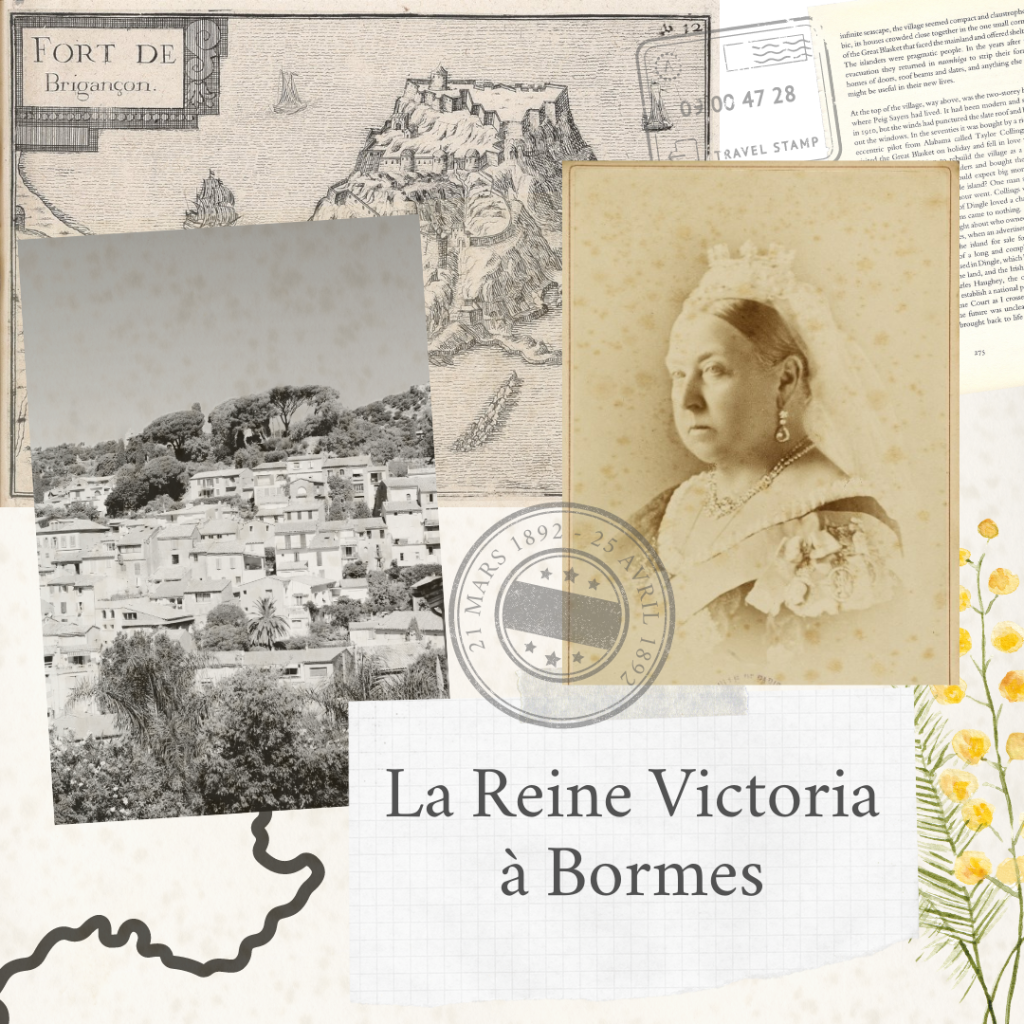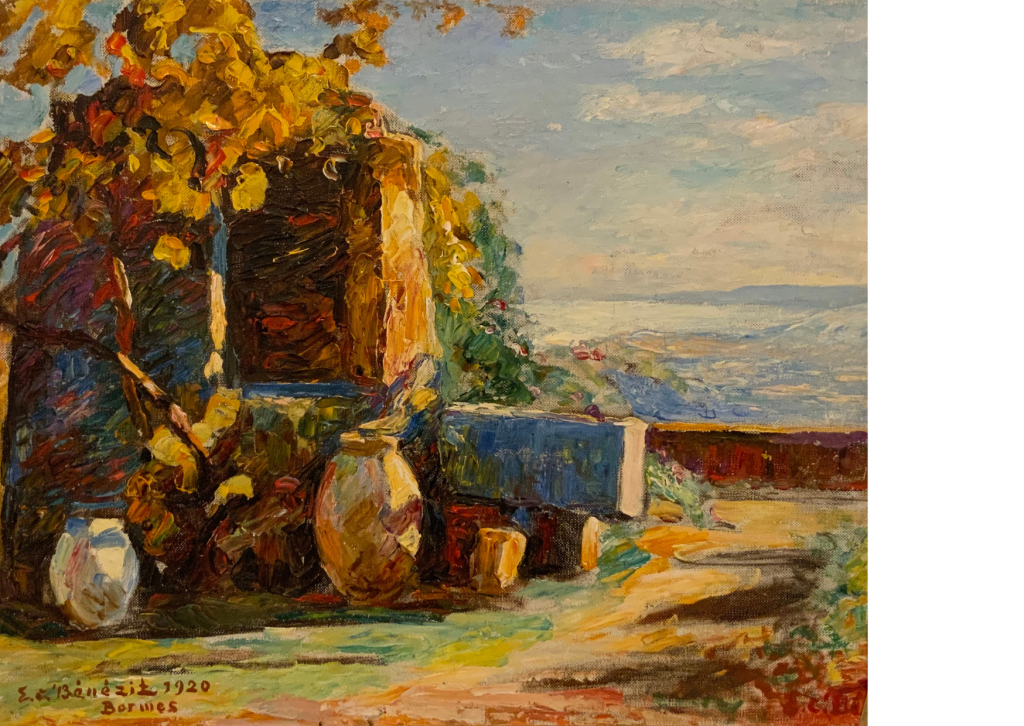Perhaps you have already seen this information… King Charles III is being crowned today, this Saturday, May 6. Indeed, following the death of his mother Queen Elizabeth II on September 8, 2022, Prince Charles became King of the United Kingdom of Great Britain and Northern Ireland and the other Commonwealth realms at the age of 73.
At the MHAB-Musée d’Histoire et d’Art de Bormes, we wanted to make a little nod to our English neighbors on the occasion of this coronation and let you discover how the history of Bormes has crossed one day the path of an English monarch. And not just any monarch: Queen Victoria.
Charles III and Queen Victoria
To do this, we must first go back (a bit far) in the family tree of Charles III … to discover that he is the direct descendant of Queen Victoria, her great-great-great-grandson more exactly. Not surprising when we learn that she is nicknamed the ” grandmother of Europe ” because a large part of the current European monarchs come from her lineage.
But who is Queen Victoria? On the throne of the United Kingdom from 1837 to 1901, she is the second longest reigning monarch, just after her great-great-granddaughter, the late Elizabeth II (the mother of Charles III, do you follow?).
During the second half of the 19th century, Queen Victoria was looking for regions where the winters were milder than in England. Thus she spent many stays in the south of France, in Nice and Hyères in particular.
A winter in the sun
During her stay in Hyères, from March 21, 1892 to April 25, 1892, Queen Victoria stayed at the Hotel de Costebelle, accompanied by a suite of 70 people, including friends, family and servants. The Hotel de Costebelle was run by a Frenchman, married to an Englishwoman: some sources say that this greatly helped in the reception of the Queen, English customs and mores having been respected in the tradition.
“According to the information we have gathered, Her Majesty the Queen of England was very satisfied with the simple, respectful, and at the same time, sympathetic welcome she received in Hyères. She had nothing but praise for the installation which was arranged for her at the Hotel de Costebelle.”
Le Petit Var, March 24, 1892



During a month-long stay, the queen visited the entire area around Hyères, discovering the landscapes of Provence and the many seasides. The sources of the time describe long walks on board a donkey-drawn carriage: this is how she travelled along the entire coast from Pradet to Bormes, passing through the Sauvebonne Valley, which she particularly liked, as far as Pierrefeu, or even La Londes, Giens and Carqueiranne. The Queen visited her neighbors and made her excursions almost daily. She was interested in social works and organized a dinner for her daughter’s birthday.
We also know that during her visit to Bormes, she went as far as the Fort de Brégançon.
At the same time, the region began to live to the rhythm of this royal stay. Numerous musical events took place, merchants organized themselves around this event and newspapers regularly published news about the queen’s activities. This had a remarkably positive effect on Hyères and its surroundings.

An incredible influence
Although this event may seem anecdotal, it actually had a significant impact on the region, including Bormes. The south of France was already a popular destination for the English since the beginning of the 19th century. Nevertheless, Queen Victoria’s stay was documented in almost every detail, both by enthusiasts and by the newspapers of the time, and the popularity of the Côte d’Azur soared, both with the English and with other European nationals. By visiting Bormes and Brégançon, Queen Victoria had a strong influence on tourism around the village.
For the little art story, Emmanuel-Charles Bénézit, the leading painter of the temporary exhibition of the MHAB-Musée d’Histoire et d’Art de Bormes until November 2023, chose Bormes as his destination in 1915. When he was very ill, his doctors advised him to go there, believing that the mild climate and the sea air would be favorable to him. And indeed, it was in the village of Bormes that Emmanuel-Charles Bénézit saw himself getting better and better!

Oil on canvas
This is just one example of the influence and impact of Queen Victoria’s visits to the south of France. Today, Bormes les Mimosas, Le Lavandou, Hyères and the rest of the French Riviera remain popular seaside destinations.
The history of Bormes is rich in anecdotes such as these… to discover more or to enter in a more immersive way in the stay of Queen Victoria through the Histopad, go to the museum!

